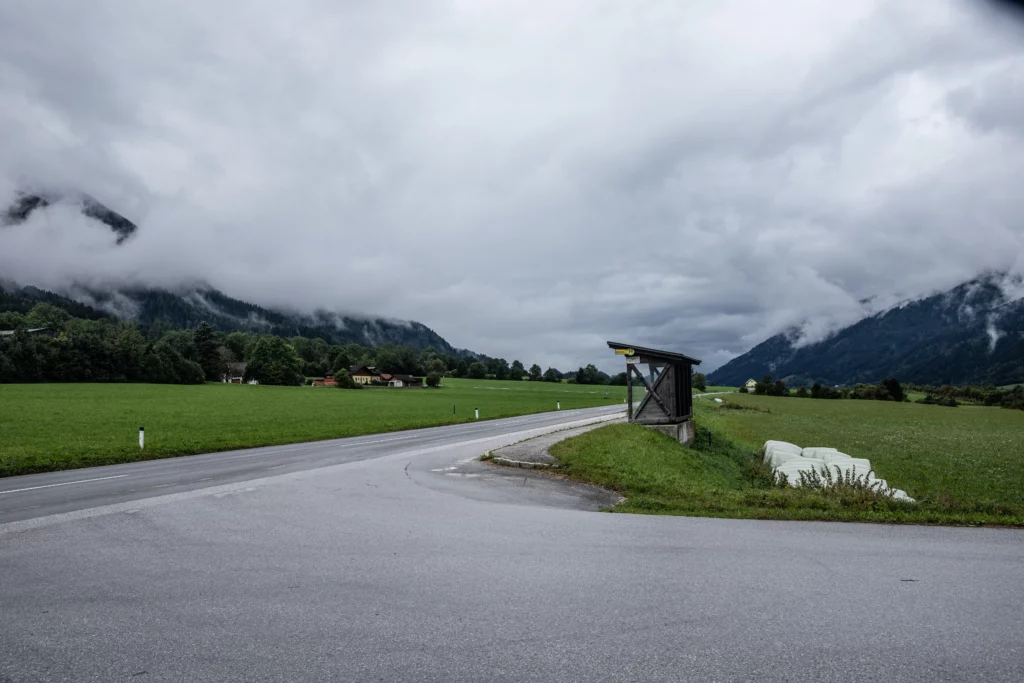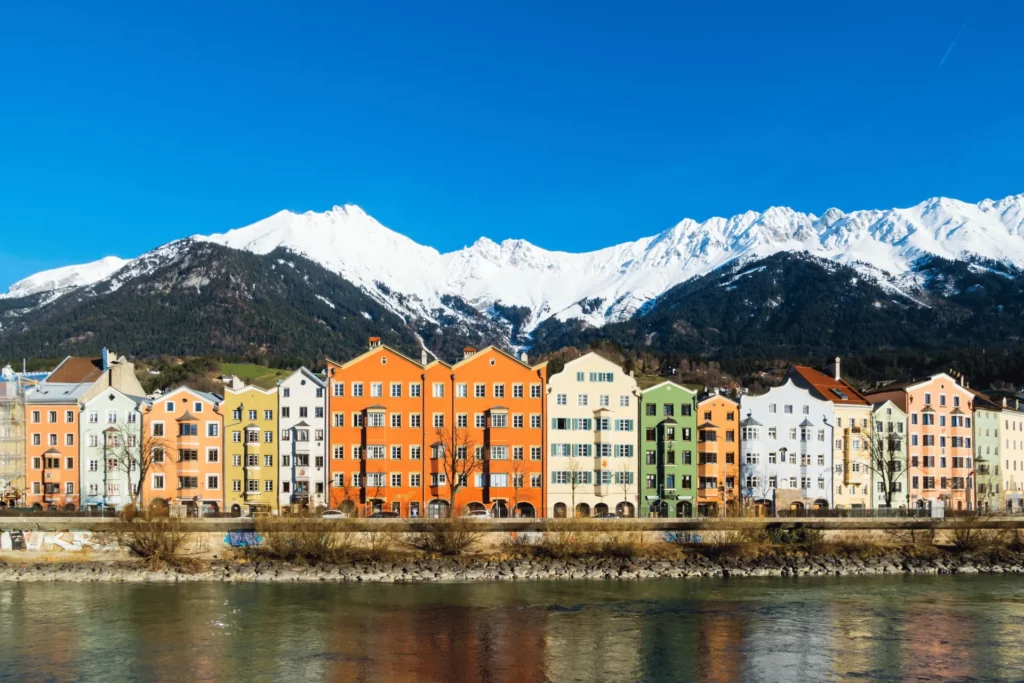Driving in Austria
Tips for the Road
- Austria follows the right-hand driving system.
- Yield to traffic on the right when you are at a junction or crossroads, unless there are signs indicating otherwise.
- Right turns on red are generally prohibited in Austria, unless a sign—typically a green arrow (“Grünpfeil”)—indicates otherwise.
- During the day, car headlights in Austria are not mandatory unless visibility is impaired by conditions such as fog, rain, or snow.
- Using mobile phones without a hands-free system is strictly prohibited.

Road Types and Speed Limits
Speed Limit: Generally 130 km/h (81 mph), may be lower in certain areas or in bad weather conditions.
Characteristics: Austria’s Autobahnen are the main high-speed road network connecting major cities and regions. Driving on these roads requires a vignette or toll sticker. They have regular rest areas with fuel stations and dining options.
Speed Limit: Usually 100 km/h (62 mph) to 130 km/h (81 mph), depending on specific regulations.
Characteristics: Schnellstraßen are important secondary roads that provide access to the Autobahnen and serve as alternate routes bypassing urban areas. Vignette purchase is necessary for these expressways as well.
Speed Limit: Typically 100 km/h (62 mph), but this may vary depending on location and road conditions.
Characteristics: Bundesstraßen are important national roads that connect regional towns and offer more scenic travel routes. They are generally toll-free.
Speed Limit: Usually around 80-100 km/h (50-62 mph).
Characteristics: Landesstraßen connect towns and municipalities within each of Austria’s federal provinces.
- Speed Limit: Generally ranges from 30 km/h (19 mph) in residential areas to 50 km/h (31 mph) in urban zones.
- Characteristics: Municipal roads are the local routes within towns and municipalities, including urban streets and rural lanes.
- Speed limits: Varies, often around 70 km/h (43 mph), subject to specific local regulations.
- Characteristics: Panoramic Roads, like the Grossglockner High Alpine Road, or the Nockalm Road cross Austria's dramatic alpine terrain, offering extraordinary views. They may only be open seasonally due to weather conditions and typically require a separate toll.
Before hitting the Autobahnen or Schnellstraßen, you’ll need to purchase a vignette—a sticker that goes on your windshield. These are available at gas stations, border crossings, and post offices, with options ranging from 10-day to yearly passes to suit the length of your stay. Once you have it, simply stick it on the windshield, and you're set to explore Austria’s expansive expressway network without any toll booth stops.
- Autobahn A1 (Westautobahn): Austria's principal west-east highway, facilitating swift travel between Vienna and Salzburg, continuing to the German border.
- Autobahn A2 (Südautobahn): An essential north-south route connecting Vienna through Graz to the Italian and Slovenian borders.
- Autobahn A4 (Ostautobahn): Links Vienna to eastern Austria and Hungary, essential for Eastern European connections.
- Autobahn A9 (Pyhrnautobahn): Runs from Linz to Graz, leading to the Slovenian border, crucial for southern access.
- Großglockner High Alpine Road (Großglockner-Hochalpenstraße): A famous panoramic route offering spectacular views of Austria’s highest peak and the surrounding Alps, connecting Bruck and Heiligenblut.
- S16 Arlberg Schnellstraße: Provides a scenic journey through the Arlberg region, connecting Tyrol and Vorarlberg, known for its alpine landscapes and as a gateway to the Arlberg ski resort area.
Top City Destinations

Vienna
Vienna is known for its imperial past, with majestic landmarks like Schönbrunn and Belvedere palaces. Wander through the historic center to see grand baroque designs, or visit the shopping districts like Mariahilfer Straße, with its fashion-forward boutiques. Treat yourself to a slice of Sachertorte in a quintessential Kaffeehaus. Outside the center, Heurigen taverns offer local wines and traditional bites. Try a porcelain workshop or chocolate-making class for a unique keepsake. The Vienna State Opera stages exquisite performances, while the iconic Wiener Riesenrad, the giant Ferris wheel, offers panoramic views, adding a touch of whimsy to the city’s skyline.
Innsbruck
Innsbruck, nestled in the heart of the Alps, is a city that blends outdoor adventure with cultural charm. You can hit the ski slopes in the morning and wander through historic streets by afternoon. The city is crowned by the stunning Nordkette mountain range, accessible via a scenic cable car ride that offers breathtaking views. The Golden Roof, with its shimmering tiles, stands as a symbol of the city’s imperial history. Cultural seekers can check out the Hofburg Palace and the Hofkirche. Don’t miss the vibrant local food scene—try Tiroler Gröstl, a hearty mountain dish, or sample a slice of strudel, an Austrian classic. For a unique twist, visit the Swarovski Crystal Worlds, a sparkling wonderland that’s a short drive away.


Salzburg
Salzburg buzzes with a contemporary vibe rooted in its musical heritage. Immerse yourself in its culture by visiting Mozart’s birthplace, now a museum, or catch a riveting performance at the annual Salzburg Festival. Climb up to the imposing Hohensalzburg Fortress for a panoramic view of the city and the Alps beyond. For a taste of local flavor, treat yourself to the iconic Salzburger Nockerl, a sweet soufflé that’s a culinary symbol of the city. For a touch of fun, explore the Mirabell Gardens, where scenes from ‘The Sound of Music’ were filmed, or take a scenic bike tour along the Salzach River to see the city from a different perspective.
Linz
Linz, known as the City of Media Arts, technology, art, and culture, and hosts various cultural events and festivals throughout the year, including the Linz Fest and the Pflasterspektakel, which is an annual street art festival that transforms the city into a lively stage for performers from all over the world. Engage with the future at the Ars Electronica Center, where interactive exhibits bring digital arts and innovation to life. The city’s culinary fame shines with its claim to the oldest cake in the world, the Linzer Torte, and you can delve into its sweet history with a hands-on chocolate workshop at the dedicated Linzer Torte factory. Walk along the Danube, or relax in the famous Botanical Gardens of Linz featuring over 10,000 species of plants and several themed gardens.


Graz
Graz, Austria’s second-largest city, embodies a fusion of historical charm and contemporary flair. Start your adventure atop Schlossberg hill — don’t just admire the Uhrturm clock tower from below; climb up to embrace the spectacular views. Let the ‘Friendly Alien,’ better known as the Kunsthaus Graz, spark your curiosity with its modern art exhibits and futuristic design. Meanwhile, the Island in the Mur stands out as a striking floating platform on the river, doubling as a vibrant hub for cultural activities. Stroll through the bustling farmers’ markets and savor the region’s rich culinary heritage with a taste of the local delicacy: pumpkin seed oil.
